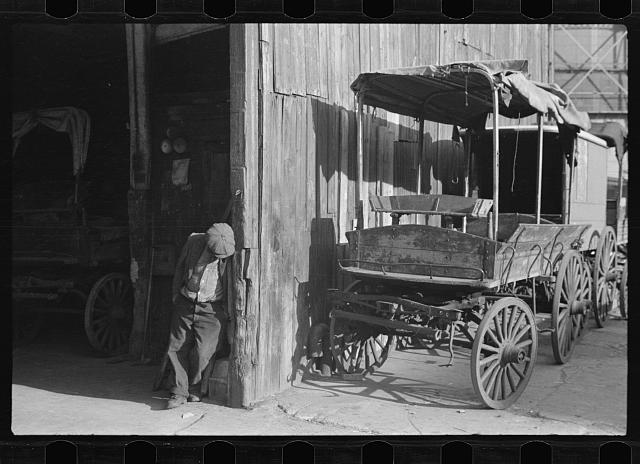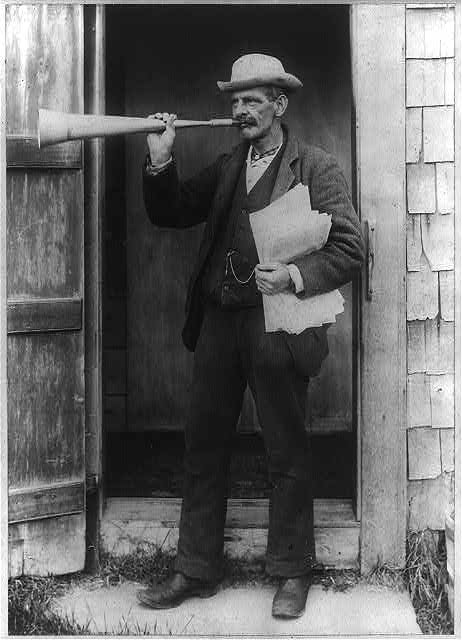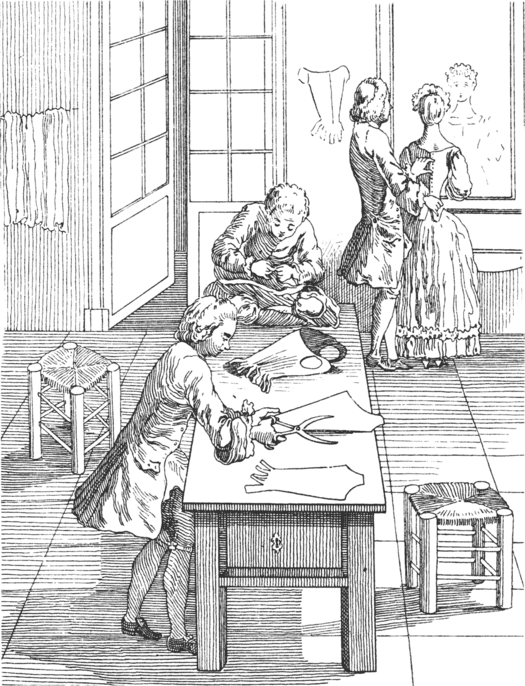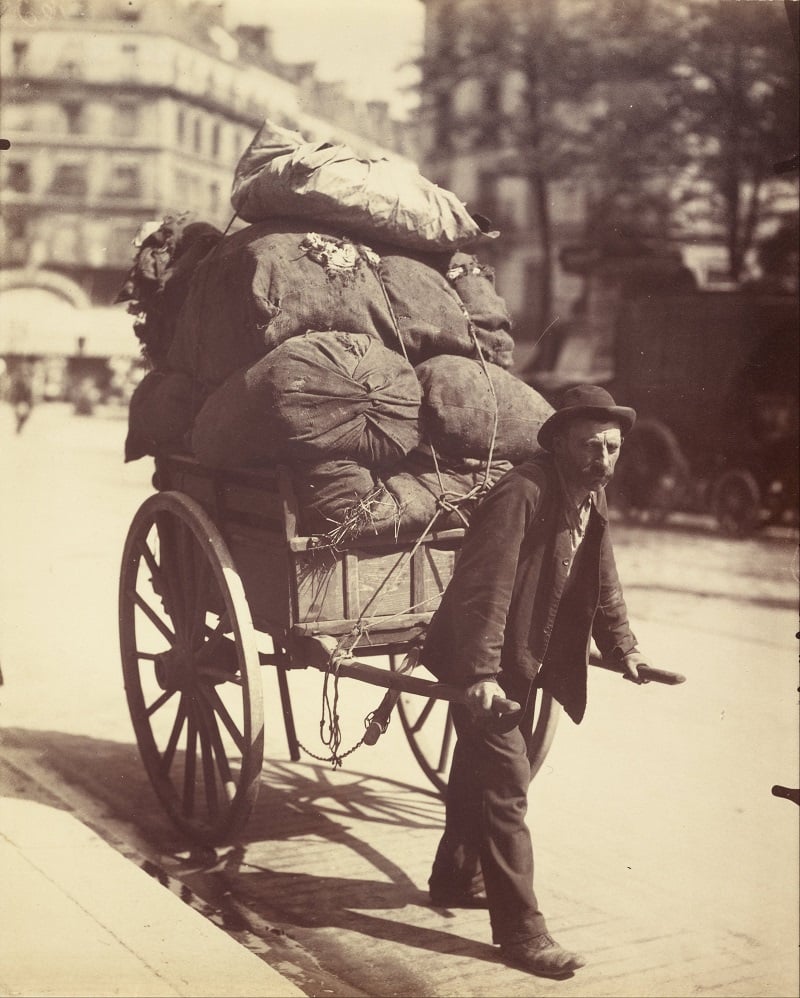Occupations are one of the most coveted gems of genealogy research — they give us a glimpse in to the daily lives of our ancestors in a way that few other raw details can. But if you’ve spent some time digging through old records you’ve probably come across jobs that you have never heard of, most likely because their necessity has faded away with time. You’ve probably even found yourself frantically googling some of these positions to gain a better understanding of what your ancestor actually did to earn a living.
We’ve pulled together a fascinating list of 10 fairly common occupations from the 1880 census that you’d be pretty unlikely to see someone performing today (although many do still exist in some form or another). Each of these jobs was common enough during the era to have its own official occupation code.
1. Hostler (ostler in England) – Staying at an inn during your travels and bringing your horse? Then you’ll be thankful for the hostler, who will care for your four legged friend in the stable. The term hostler does refer to several modern occupations as well, but the original position of “a man employed to look after the horses of people staying at an inn” is one you’re not likely to find in abundance in our motorized world.
2. Livery-Stable Keeper – Like the hostler, the livery-stable keeper’s bread and butter depended on the care of horses who were used in everyday tasks and transportation – by boarding and renting them – making it clear why this job is also nearly extinct.

3. Whitewasher – A somewhat hazardous job thanks to the dusty lime concoction used to create the whitewash, the common 19th century occupation of whitewashing buildings to improve their appearance and repel rot is not something we see today.
In Britain and Ireland, whitewash was used historically, both externally and internally, in workers’ cottages, and still retains something of this association with rural poverty. In the United States, a similar attitude is expressed in the old saying: “Too proud to whitewash and too poor to paint”, with the connotation that whitewash is a cheap imitation of “real” paint. Read more on Wikipedia.
4. Newspaper Crier – The social media gurus of a bygone era, newspaper criers made all the noise they could to deliver the headlines and sell the daily paper. More than one town law was enacted to limit where and when they could do their loud and important work.

5. Artificial Flower Maker – Most often a woman’s occupation – one which required long hours and much skill – the profession of creating artificial flowers for decoration would eventually be overtaken by mass production. However, the desire for this specialized product – which was hard to replicate in a factory – meant that the profitability of this craft held strong longer than many other handiworks.
In the making of a flower the hand worker has no mechanical rival. No inventor has been able to harness electricity or steam to any instrument which can reproduce the deft twist of the skilled rose maker’s fingers, or the discriminating touch of the worker who tastefully groups together leaves and finished flowers. The nature of the product, the absence of machinery, and as a result the lack of change in fundamental processes, make this industry unique among the important wage-earning pursuits of women. From Artificial Flower Makers, a study, 1913
6. Telegraph Company Employee – No big surprises here. Once a technology that changed the way we communicate and spread information, the use of the telegraph is now limited to specialized applications only. In 1880, on the other hand, a job as a telegraph operator was a fairly common skilled profession that paid well. The companies that operated them provided a wealth of other jobs as well.
7. Corset Maker – If you haven’t been wearing your corset lately than it will probably come as no big surprise why this job is not one you’re likely to see advertised in the local want ads. However corset makers do still exist for costume design and, like their historical counterparts, they must be extremely skilled tailors to complete their craft.

8. Rag Picker – Still a widespread occupation in developing nations, rag picking is no longer considered a profession in our throw away society. In the 19th century on the other hand, rag pickers were responsible for digging through refuse to find materials to be reused. They would then sell the materials to those who could recycle them.
Although it was solely a job for the lowest of the working classes, rag-picking was considered an honest occupation, more on the level of street sweeper than of a beggar. In Paris, for instance, rag-pickers were regulated by law: Their operations were restricted to certain times of night, and they were required to return any unusually valuable items to the owner or to the authorities. Read more.
9. Turpentine Farmer or Laborer – Like petroleum today, turpentine was a universal manufacturing component in the 19th and early 20th centuries. Used in everything from paints and varnishes to patent lather and crayons, it’s produced from the resin of pine trees and many earned their living in its production and sale. Farmers who owned enough pine rich land could make a huge profit, while laborers often found seasonal work to support their families.
From Popular Science Monthly, April 1887
Finding myself in the pine-region of Southeast Georgia, and thinking that some information on the subject above named may not prove uninteresting to your readers, I will endeavor to tell to them that which has been imparted to me by those thoroughly conversant with the whole business. A turpentine-farm consists of from five to forty crops of ten thousand five hundred boxes each. The work is sometimes carried on by the owners of the pine-forests themselves; again, the trees are leased out for a certain number of years, two or three being about the limit. Negro labor is principally employed in this section. The work commences in November, when the boxing of the trees begins. The dipping of the crude into barrels begins about the middle of March, and the boxes are emptied seven or eight times during the season. They hold from one to two quarts each, and from 10,000 boxes 210 barrels is considered a fair, 250 a fine yield.
And last, but certainly not least….
10. Gentleman – Yes, this actually had an occupation code in the 1880 US census. Just go ahead and try to get that job today.
Other common occupations from this time period that are in much less demand today are galloon, gimp, and tassel makers, carriage and wagon craftsmen, nail makers, flax dressers, trunk, valise and carpet-bag makers, coopers, draymen, sawyers and hucksters.
Do you have an ancestor who held one of these positions? What’s the most interesting occupation you’ve ever found in a census record?
Looking for more information on old occupations for genealogy research? Check out this article.
Originally published Dec 2014.

There were several caulkers in my g-grandfathers family. A shipbuilding town
My gggg Grandfather was a Marker for the East India Company Services in London in the 1820s. Does anyone know what this is?
My ancestor lived around Cardiff Wales and was a tidewaiter. Like a customs officer.
gay
“9. Turpentine Farmer or Laborer – Like petroleum today, turpentine was a universal manufacturing component in the 19th and early 20th centuries. Used in everything from paints and varnishes to patent lather and crayons, ”
I recall a school yard song – ‘Queen Queen Caroline washed her hair in turpentine”. And an allegorical tale about someone who woke up in the night from a dream in whch he had been given the Theory of Everything, the Meaning of Life. He wrote it down quickly in the dark and went back to sleep. Next morning he looked at what he had written: ‘turpentine’.
It is very good for cleaning the old green enamel baths. I guess that’s where it comes into its own with – as you say – “patent Lather” as well as those shiny patent leather shoes that old maids forbade their young charges to wear for fear of reflections up their petticoats. .
My grandmother was a ‘candy miner’ at the age of 14 in the 1910 Baltimore census.
Does anyone know what a ‘candy miner’ is/was?
You are thinking crop rotation. Share cropping was the practice of allowing someone to plant on land you own in return for a “share” of the crop they harvest. It was what replaced slavery in the US.
No it really isn’t ! It seems watermelons rapidly deplete required nutrients from the soil, consequently to grow the very best you must alternate the Mellon patches on which they grow.I was lucky enough to meet a fascinating and quite knowledgeable fellow who did just that.And. it was simply a coincidence the gentleman was Black.He produced excellent melons.
The most unusual I’ve found: A 19th-century Scottish cousin was a colporteur, which I gather meant he was a travelling salesman of Bibles, tracts and other religious publications.
Most of my ancestors did whatever they could to keep body & soul together, and feed their families….
A 19th-century English ancestor started out as a greengrocer in London, but mid-century he became a “photographic artist,” and later an umbrella maker.
A Scottish ancestor was a linen weaver in Monzie Perthshire, but as that work dried up he worked as a labourer. He also helped with the census, enumerating outlying areas. And he was a church beadle.
Finally, there was a Scottish cousin’s grandfather who lived in Delting, Shetland. He was a crofter and fisherman, of course, but also a joiner and his son took that trade to sea.
I have miners, farmers, and a pharmacist in my tree. Oh yeah, a RR clerk, a streetcar driver and a brakeman too.
My great great Grandfather was a beetler in Ireland. Process of preparing linen after weaving- which my other Great grandfather did.
One of my ancestors was a rush seater and another was a hand folder. I guess back before mass machinery you didn’t need much formal education.
My great grandparents immigrated from Holland since their form of income was slowly drying up. They were rope makers and and appearance of the steamship was putting them out of business.
I come from a long line of nail makers in a small town. It was the family business for almost 100 years.
Carter, cord waiver,
Lady of Pleasure.
I have quite a few iron puddlers. Puddling was an improved process to convert pig iron into wrought iron with the use of a reverberatory furnace.
How about a Drover?
The occupation that took me the longest to figure out; my great grandfather listed himself as a gigger on his military record (Civil War). At http://www.rmhh.co.uk/occup/g.html I learned that a gigger “operated a gigging machine – a machine for dressing woollen cloth by subjecting it to the action of teasels.”
In my great-grandpa’s home in 1900 (Milwaukee, WI), the two females listed as borders in relation to the head-of-household, had occupations listed as “Prostitutes”! As did about 40% of the residents of that Enumeration District!
One of my ancestor’s occupation in 1880 was “Caubulo from Londin”. I’ve tried finding this caubulo but nothing. If anyone knows what this is, please reply. Thanks.
How can you forget sharecropper. Its gone and good riddance
Think this was one who made the medalions that adorned the harness on a carriage horse but would welcome more info.
My 3rd great grandfather was an Artificial Florist. He was born in 1805 in Wrexham, Denbighshire, Wales and lived in London for 10 years before moving up to the north of England. On the last census he was recorded on (1881) and on his Death Certificate (he died 1888) it shows his occupation as being an Artificial Florist although one time his occupation was down as Feather Dresser or Traveller but still involved flowers.
Yes,I do believe you are correct, I did hear that from another relative.
your No 5 -artificial flower maker is still common in Asian countries and I have a friend in Australia of European descent who makes the most amazing artificial flowers that are so good they look almost real
My ancestors ( 5 generations) Were Clock makers in The Lancaster PA Area
My Great Great Grandfather was a Cooper(Barrel Maker) in The Elizabeth PA Area.
Another Eberman was a Soap Chandler
Or your ancestor could have been a wheelwright — a specialist in wheels…
Rene, someone who makes and repairs wheels is a wheelwright. A blacksmith works with all kinds of wrought iron, not just wheels.
http://en.m.wikipedia.org/wiki/Wheelwright
My moms grandfather J Grenier made wagon wheels and repaired them, I think he would be a blacksmith.
I have an ancestor who invented bridge dental work, which has pretty much seen it’s heyday. Now it’s
all veneers and implants. I had a bridge when I was in my twenties, which was replaced with a full crown in my early 40’s.
One of my ancestors was a stagecoach driver in the 1800s, on a route back and forth between Vermont and Washington County, New York. That was an important job then but I’m pretty sure it’s not too common now. 🙂
Occupations in my family:
Shoemaker
Wireworker
Tinner
Plasterer and Glazier
Straw Bonnet Maker
Roller in Steel Mill
Brittanicaware Maker was the person who made the ornate metalwork medalions for the horse harnesses.
Found this in the 1860 census and had to research to find what it meant.
My family on both sides are mostly Miners and Ag Labs, But I have found a Rabbit Trapper.